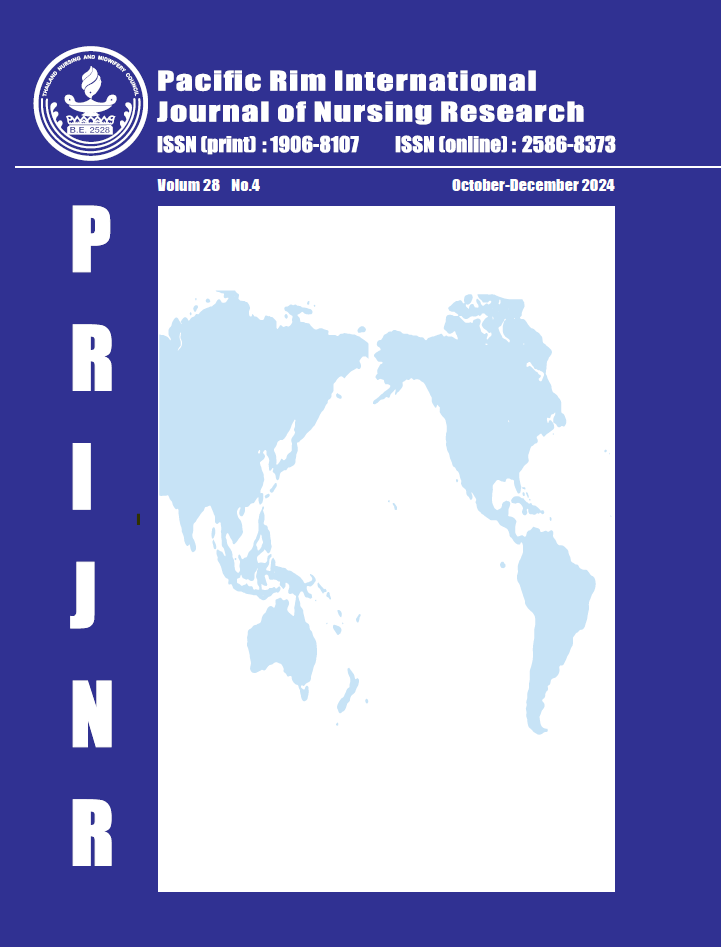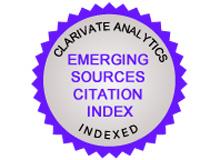Prevention of Risky Motorcycle Driving Behaviors Using Gamification among Senior Secondary School Students in Bangkok: A Quasi-experimental Study
DOI:
https://doi.org/10.60099/prijnr.2024.269315Keywords:
Gamification, Intention of driving safety, Prevention motivation, Prevention program, Risk behavior, Senior Secondary school studentsAbstract
Motorcycles have the highest rate of vehicle collisions in Thailand, causing deaths, injuries, and disability—this quasi-experimental study aimed to test gamification’s effectiveness in preventing risky motorcycle driving behaviors. The participants were senior secondary school students in Bangkok who used motorcycles daily to travel between home and school. Students in grade 11 and in two classrooms were randomly selected and assigned to experimental and control groups. Then, random sampling was used to select the participants who met the inclusion criteria in the experimental group (n = 37) receiving the behavioral risk prevention program using gamification for six weeks and the control group (n = 38) receiving a regular program from school. Questionnaires used for data collection were the Demographic and Motor Cycle Related Behavior and Experience Form, the Prevention Motivation Questionnaire, and the Intention of Driving Safety Questionnaire. Descriptive, and paired and independent t-tests were used to analyze the data.
The results revealed that the mean score of prevention motivation and the intention of driving safety in the experimental group after receiving the program were significantly higher than before receiving the intervention program and significantly higher than the control group. This study underscores the potential of using gamification to prevent adolescent motorcycle accidents. However, further research is necessary to evaluate the program’s long-term effectiveness in different settings. Moreover, it highlights the importance of reinforcing training and licensing for motorcycle driving among adolescents.
References
World Health Organization (WHO). Global status report on road safety 2018 [Internet]. 2018 June 17 [cited 2024 July 22]. Available from: https://www.who.int/publications/i/item/9789241565684
Srisakul S. The effects of health protective motivation for helmet wearing behavior among higher secondary school students, Si Racha district, Chon Buri province [master’s thesis]. [Chon Buri]: Burapha University; 2015. Available from: https://digital_collect.lib.buu.ac.th/dcms/files/51924183.pdf (in Thai).
Injury data collaboration center, Division of Injury Prevention. Situation of death from road accidents in Thailand [Internet]. 2020 [cited 2024 July 22]. Available from: https://dip.ddc.moph.go.th/ (in Thai).
Sonthikul S. Motorcycle related injuries in children in the South-East Asia region [Internet]. Bangkok: Thai Health Promotion Foundation. 2016 Sept [cited 2024 July 22]. Available from: https://trsl.thairoads.org/FileUpLoad/1625/170208001625.pdf (in Thai).
Luktong L. Development of prevention systems of road traffic accidents by district health board mechanisms, Song Dao District, Sakon Nakhon Province. J Res Health Inno Dev [Internet]. 2024 Jan 8 [cited 2024 Apr 1];5(1):105-16. Available from: https://he01.tci-thaijo.org/index.php/jrhi/article/view/268211 (in Thai).
Chimchaiyaphum T, Sota J. The effectiveness of a motorcycle accident prevention program by applying self-efficacy theory and a HiyariHatto risk map among secondary school students in Phrathatnongsammuen school, Bankaeng Sub-district, Phukieo District, Chaiyaphum Province. Off Dis Prev Contr 9th Nakhon Ratchasima J. 2016;22(3):33–44. Available from: https://he02.tci-thaijo.org/index.php/ODPC9/article/view/189110 (in Thai).
Chivanon N. Accidents in children: situation and prevention. JFONUBUU. 2016;24(3):1-12. Available from: https://he02.tci-thaijo.org/index.php/Nubuu/article/view/74896 (in Thai).
Li Z, Huang Z, Wang J. Association of illegal motorcyclist behaviors and injury severity in urban motorcycle crashes. Sustainability. 2022;14(21):13923. doi: 10.3390/su142113923.
Abdulwahid SN, Mahmoud MA, Ibrahim N, Zaidan BB, Ameen HA. Modeling motorcyclists’ aggressive driving behavior using computational and statistical analysis of real-time driving data to improve road safety and reduce accidents. Int J Environ Res Public Health. 2022;19(13): 7704. doi: 10.3390/ijerph19137704.
Andrade Í, Pitteri J. Profile and behavior of motorcyclists in traffic in the region of Jardim Aureny I, II, III, IV and Taquaralto de Palmas-TO. Rev Ceres [Internet]. 2022 Oct [cited 2024 July 24];14(1):178-96. Available from: http://ojs.unirg.edu.br/index.php/1/article/view/3674
Rusli R, Oviedo-Trespalacios O, Salam SAA. Risky riding behaviours among motorcyclists in Malaysia: a roadside survey, Transp Res Part F Traffic Psychol Behav. 2020; 74:446-57. doi: 10.1016/j.trf.2020.08.031.
Ali SZNBM; Razelan ISBM. Exploration of risky riding behaviour among young motorcyclist. IOP Conf Ser Mater Sci Eng. 2021;1092(1):012074. doi:10.1088/1757-899X/1092/1/012074.
Chiangkhong A, Surakarn A, Kleebbua C. Pounglek W. A profiles of motorcycle accident mortality and risk behavior in Thai children. IJG [Internet]. 2024 Apr 26 [cited 2024 Jul 13];20(3):54-63. Available from: https://journals.sfu.ca/ijg/index.php/journal/article/view/3133
Rogers RW. Cognitive and physiological processes in fear appeals and attitude change: a revised theory of protection motivation. In: Cacioppo J, Petty R, editors. Social psychophysiology. Guilford Press; 1983. pp. 153-77.
Brockamp T, Koenen P, Caspers M, Bouillon B, Köhler M, Schmucker U; Working Group of Injury Prevention of the German Trauma Society (DGU). The influence of an injury prevention program on young road users: a German experience. Eur J Trauma Emerg Surg. 2019;45(3):423-9. doi: 10.1007/s00068-017-0872-9.
Zainafree I, Hadisaputro S, Suwandono A, Widjanarko B. The road safety education program for adolescents using social media, proving increasing knowledge, beliefs, attitudes, intentions and behavior. Safety. 2022;8(1):12. doi: 10.3390/safety8010012.
Chapman R, Buckley L, Sheehan M. Developing safer passengers through a school-based injury prevention program. Saf Sci. 2012;50(9):1857-61. doi: 10.1016/j.ssci.2012.05.001.
Sharwood LN, Martiniuk A, Sarrami Foroushani P, Seggie J, Wilson S, Hsu J, Burns B, Logan DB. Intentions and willingness to engage in risky driving behaviour among high school adolescents: evaluating the bstreetsmart road safety programme. Inj Prev. 2023;29(1):1-7. doi: 10.1136/ip-2022-044571.
Box E, Dorn L. A cluster randomised controlled trial (cRCT) evaluation of a pre-driver education intervention using the Theory of Planned Behaviour. Transp Res F: Traffic Psychol Behav. 2023;94:379-97. doi: 10.1016/j.trf.2023.03.001.
Nuboon K, Banchonhattakit P. Effects of health education program of motorcycle accident prevention among students in Rajamangala University of Technology Isan Nakhonratchasima. Res Dev Health Syst J. 2015;8(2):1-9. Available from: https://trsl.thairoads.org/FileUpLoad/1652/170206001652.pdf (in Thai).
Surakarn A, Chiangkhong A, Pounglek W, Kleebbua C. Effectiveness of motorcycling avoidance behaviors promoting program among adolescence under 15 years old. Kuakarun J Nurs. 2022;29(1):145-59. Available from: https://he01.tci-thaijo.org/index.php/kcn/article/view/254833/173349 (in Thai).
Phupuewkaew W, Thongkam W, Tippayanet N. Effects of driving safety program of motorcycle accident prevention among students in Rajabhat Mahasarakham University. Off Dis Prev Contr 9th Nakhon Ratchasima J. 2018;24(1): 76-85. Available from: https://he02.tci-thaijo.org/index.php/ODPC9/article/view/188819 (in Thai).
Sitti S, Narin R, Tuanrat W. Effectiveness of a motivation enhancement program on practices to prevent motorcycle accident injuries in middle high school students, Chiang Mai province. Lanna Public Health J. 2022;18(2):1–15. Available from: https://he02.tci-thaijo.org/index.php/LPHJ/article/view/258522/177580 (in Thai).
Phitthayasenee M, Sittiwong T, Phumpuang K. Blended learning model using gamification base to promote computational thinking skills of student’s teachers. Lampang Rajabhat Univ J. 2020;9(2):172–83. Available from: https://so04.tci-thaijo.org/index.php/JLPRU/article/view/247860/168280 (in Thai).
Ngimkhuntod S, Rampai N, Diteeyont W. Development of game application on Thai subject in topic of spelling and reading with blended learning activity to enhance reading skill of grade 1 students. RMUTI J Hum Soc Sci. 2021;8(2): 31–45. Available from: https://so05.tci-thaijo.org/index.php/RMUTI_SS/article/view/252931 (in Thai).
Jongmuenwai1 B, Kongsrima K, Prachai S, Jabjone S, Suikraduang A. Gamification for learning. PJ Journal. 2018;4(2):34-43. Available from: https://ph02.tci-thaijo.org/index.php/project-journal/article/view/184468/129912 (in Thai).
Department of Mental Health, Ministry of Public Health. What parents should know when their children enter an age of change [Internet]. 2018 Dec 24 [cited 2024 Apr 20]. Available from: https://dmh.go.th/news-dmh/view.asp?id=28427 (in Thai).
Des Jarlais DC, Lyles C, Crepaz N; TREND Group. Improving the reporting quality of nonrandomized evaluations of behavioral and public health interventions: the TREND statement. Am J Public Health. 2004;94(3):361-6. doi: 10.2105/ajph.94.3.361.
Sanitlou N, Satphet W, Naphaarak Y. Sample size calculation using G*Power program. J Suvarnabhumi Tech. 2019;5(1): 496-507. Available from: https://so04.tci-thaijo.org/index.php/svittj/article/view/181958/136948 (in Thai).
Chirawatkul A. Statistics in research: appropriate selection. Bangkok: Wittayapat; 2015.
International Business Machines Corporation. IBM® SPSS® Statistics 26.0 for Windows. Armonk (NY): IBM Corp; 2019.
Tareram J, Ua-kit N. The effect of motivation promoting program on self-management behavior in asthmatic adult patients. J Nurs Health Care. 2018;36(3):221-32. Available from: https://he01.tci-thaijo.org/index.php/jnat-ned/article/view/151851/110914 (in Thai).
Jiamjai C, Boonchuaythanasit K, Kainakha P. Effectiveness of health education program for health literacy development by cooperative learning to promote safe motorcycling behavior of Mathayomsuksa students, Benchamatheputit Phetchaburi school, Phetchaburi. Kasetsart Educ Rev. 2016;31:205-17. Available from: https://so04.tci-thaijo.org/index.php/eduku/article/view/78159/62645 (in Thai).
Sridet R, Phimphanchaiyaboon L, Meesomsak N. Road traffic accident: motivation for motorcycle accident prevention in adolescents and youth. JNSU. 2021;22(43):127-36. Available from: https://he01.tci-thaijo.org/index.php/nursingsiamjournal/article/view/250900/171791 (in Thai).
Holt MF, Testerman GM. Trauma surgeon-led and funded injury prevention program decreases admission for motorcycle crash injuries. Am Surg. 2022;88(4):740-5. doi: 10.1177/00031348211050837.
Schmidt J, Drattell J, Hashida K, Lynall R, Gore R, Devos H. Examination of simulated driving performance throughout concussion recovery. Arch Phys Med Rehabil. 2024;105(4):e191. doi: 10.1016/j.apmr.2024.02.655.
Downloads
Published
How to Cite
Issue
Section
Categories
License
Copyright (c) 2024 Pacific Rim International Journal of Nursing Research

This work is licensed under a Creative Commons Attribution-NonCommercial-NoDerivatives 4.0 International License.
Copyright: The Pacific Rim International Journal of Nursing Research, Thailand Nursing & Midwifery Council has exclusive rights to publish, reproduce and distribute the manuscript and all contents therein.








.png)



